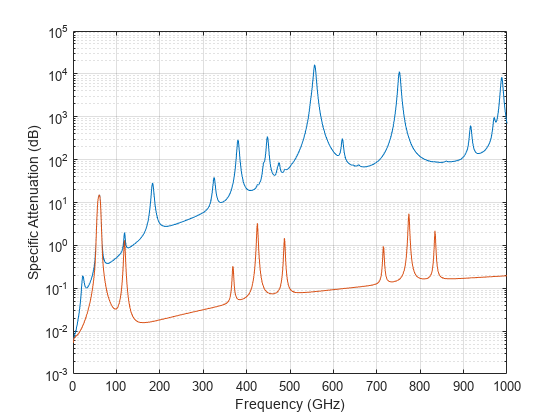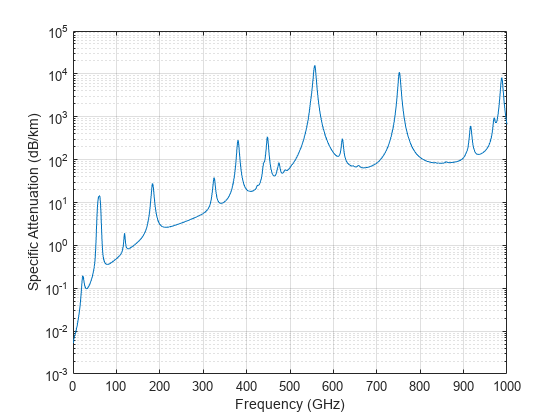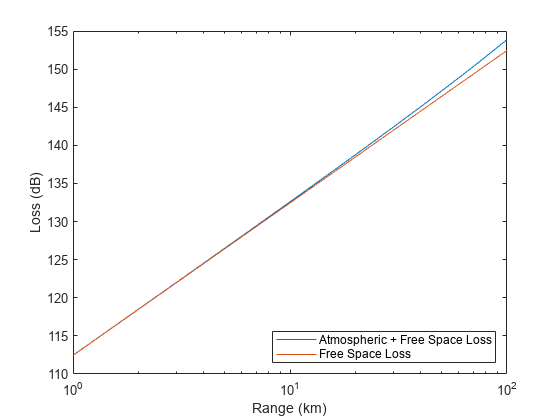gaspl
RF signal attenuation due to atmosphere gaseous absorption
Description
L = gaspl(range,freq,T,P,den)L, due to atmosphere gaseous absorption.
rangerepresents the signal path length.freqrepresents the signal carrier frequency.Trepresents the ambient temperature.Prepresents the atmospheric pressure.denrepresents the atmospheric water vapor density.
The gaspl function applies the International
Telecommunication Union (ITU) atmospheric gas attenuation model [1] to calculate path loss for signals primarily due to oxygen and water vapor. The
model computes attenuation as a function of ambient temperature, pressure, water
vapor density, and signal frequency.
The function requires that the signal path is contained entirely in a homogeneous
environment – temperature T, atmospheric pressure
P, and water vapor density den do not
vary along the signal path. You can account for the variation of atmospheric
parameters with height using the tropopl and
atmositu functions in the Radar Toolbox.
The attenuation model applies only for frequencies at 1–1000 GHz.
Examples
Input Arguments
Output Arguments
More About
References
[1] Radiocommunication Sector of International Telecommunication Union. Recommendation ITU-R P.676-10: Attenuation by atmospheric gases 2013.
Extended Capabilities
Version History
Introduced in R2020b
See Also
fspl | fogpl | tropopl | phased.LOSChannel | phased.WidebandLOSChannel


